THE JENNY SCHWARZ HISTORY
Among a small collection of objects that remained beyond the death of a man sat a suitcase stuffed with photo albums. Crammed into every crevice were stacks of loose photographs waiting to be added. The pictures document a life in nature, of adventurous escapades in jagged rocks or powder snow. They depict a rugged alpine existence and a life spent playing in nature’s architecture. Apart from his rucksack, a couple of garments and an iron it made up the bulk of what he left behind. The man was Johann Schneider, a bespoke tailor in 1930s Bavaria and Jenny’s Great-Grandfather.
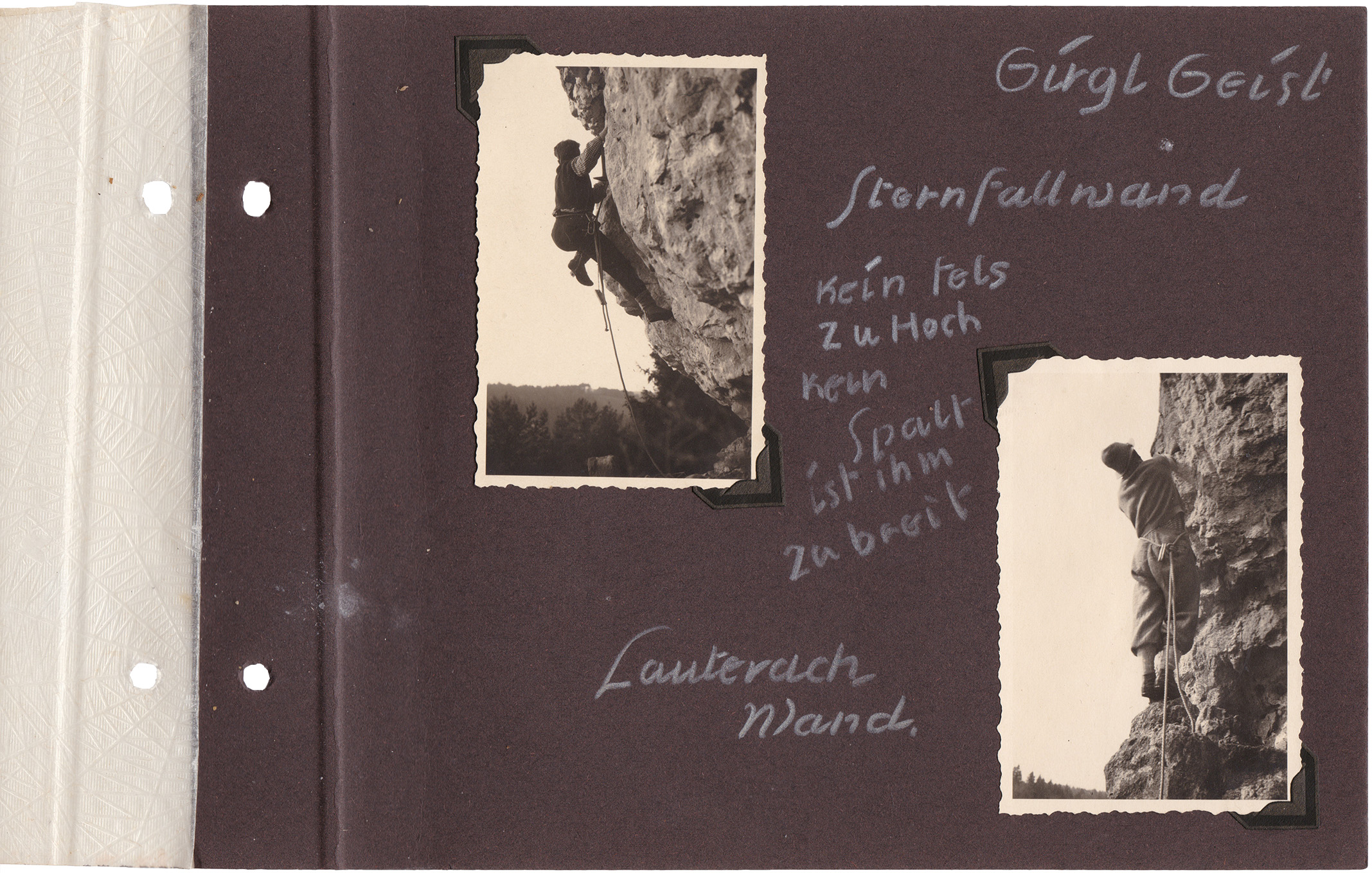
AN ALPINE EXISTENCE
The albums are annotated with names of mountains, sketches of wild flowers and the occasional pressed flower. Between two shots, scrawled at an angle lies probably the most apt phrase that likely sums up Johann’s life.
“Kein fels Zu Hoch, kein Spalt ist ihm zu breit”
“No rock too high, no gap too wide”
NEL CAMINO
This dramatic image of Johann was captured on an excursion to the Italian Cinque Torre mountains. He straddles the gap between two rock faces of the Torre Romana referred to on the picture as Nel Camino which means descriptively ‘in the chimney’ or rather more poetically ‘in the fireplace’.
As lead climber, the rope stretches beneath him as he carves the route between the rock faces. A single misplaced boot or loose rock beneath whitened fingers would have sent him down bouncing off rock in a disturbing game of nature’s pinball.
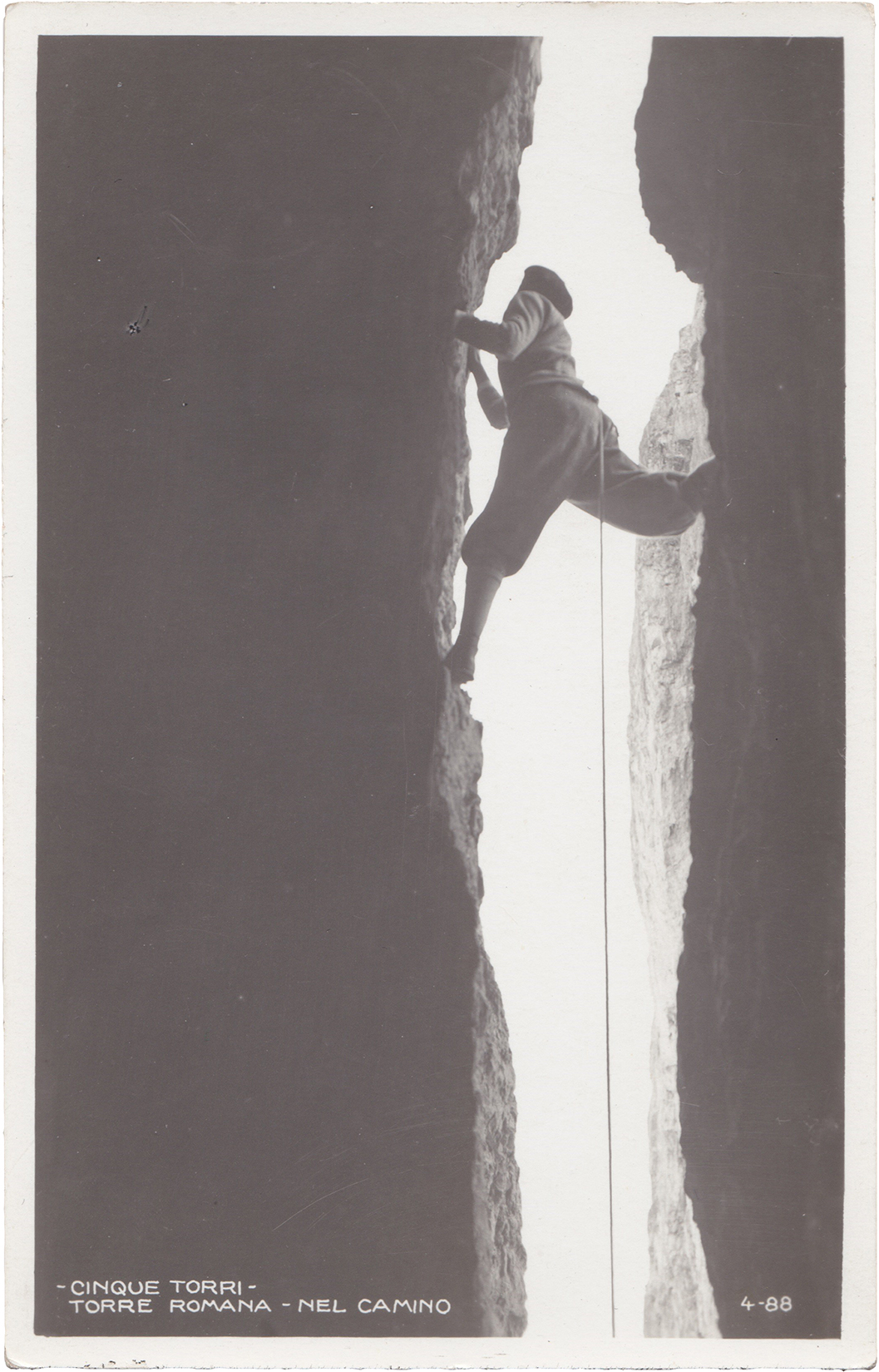
NEL CAMINO
This dramatic image of Johann was captured on an excursion to the Italian Cinque Torre mountains. He straddles the gap between two rock faces of the Torre Romana referred to on the picture as Nel Camino which means descriptively ‘in the chimney’ or rather more poetically ‘in the fireplace’.
As lead climber, the rope stretches beneath him as he carves the route between the rock faces. A single misplaced boot or loose rock beneath whitened fingers would have sent him down bouncing off rock in a disturbing game of nature’s pinball.

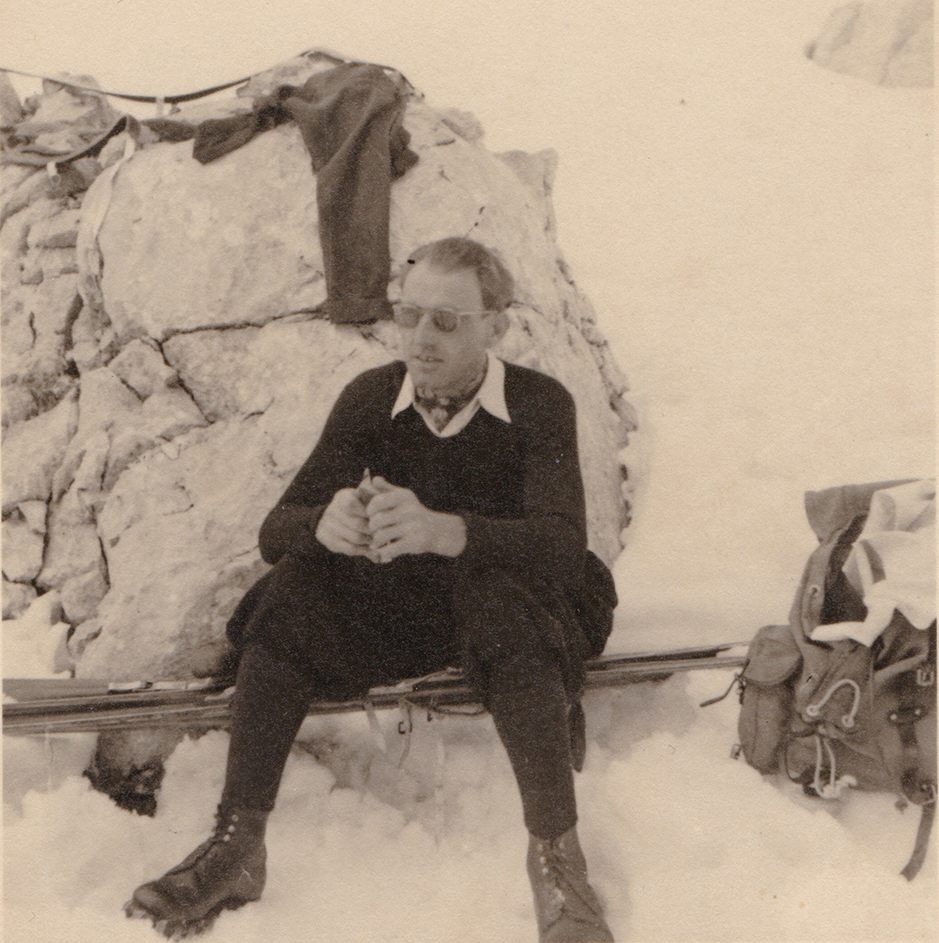
EARLY SPORTING CLOTHING
One thing that might strike you at first glance is that he looks reasonably formally dressed for his pursuits. With the technical fabrics we know today being in their earliest of developed stages, the best cloth and design would have been wool, very likely merino wool, and loose plus-four trousers respectively. The natural wind and water resistance of wool, the regulation of body temperature and the natural stretch embodied by the fibres made it an ideal choice for early mountaineers and adventurers. The neckerchief and fashionable sunglasses were a natural addition for a man making a living in menswear.
HOBNAILS
At second from right, caught with his eyes closed, lies Johann amid his close friends. Their legs outstretched before them they show off the varying patterns made up by the hobnails on their mountaineering boots. The birth of the hobnail boot was in the mountains where the metal would act as grip on steeply sloping rock or snow. During World War I, the hobnail boot was improved and modified in reaction to how they fared in the trenches. It makes this photo all the more poignant as these men would soon find themselves off the mountain but in hobnails again, this time in the battlegrounds of World War II.
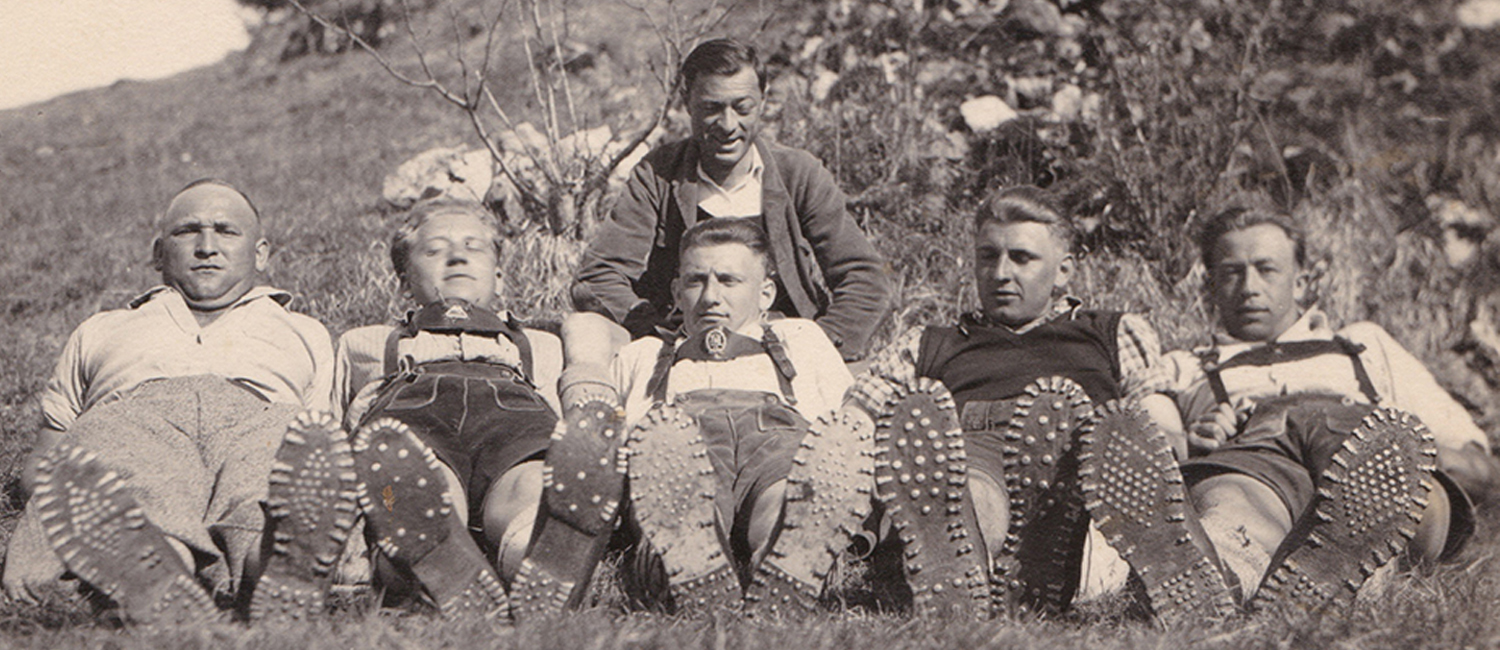
SURVIVING QUALITY
Caught mid-climb Johann scours the route through the rocky outcrop that looms above him. Securely fastened to him is one of the few physical and personal objects that survive. This rucksack now lives in the Jenny Schwarz studio and acts as a gentle reminder for quality and practicality. A metal frame acts as the foundation for a khaki canvas fabric edged with brown leather. The shoulder straps and waist-belt are lined with an off-white felt, not dissimilar to the colour of the edelweiss petal. Hauled up and down the mountain you’d expect to be left with a battered, torn shell. But, its quality materials and construction have allowed it to remain renewed and robust, ready for its next ascent.

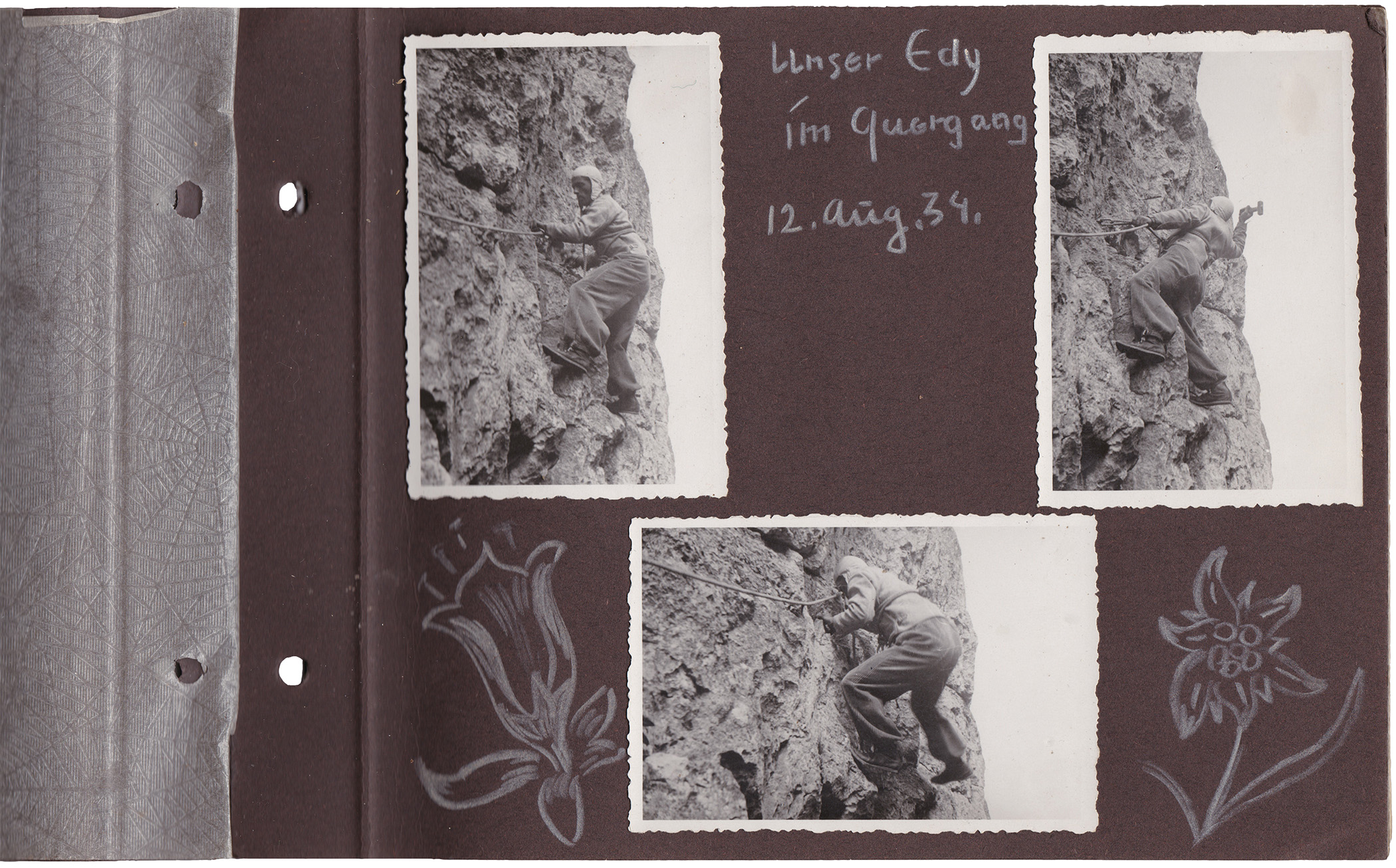
THE NOBLE, WHITE FLOWER
Among the album pages you’ll find the odd pressed flower or sketch. These were the delicate, natural treasures found lodged in crevices at lofty heights. The Edelweiss, seen sketched on the right, is one such flower with its silvery felt-like petals and golden jewelled centre. In Alpine folklore there are many tales of young men scaling rock faces to pick these noble, white flowers for their beloved. Some retrieve the token and some die in the attempt granting Edelweiss flowers the enduring symbol of bravery, daring and true love.
THE NOBLE, WHITE FLOWER
Among the album pages you’ll find the odd pressed flower or sketch. These were the delicate, natural treasures found lodged in crevices at lofty heights. The Edelweiss, seen sketched on the right, is one such flower with its silvery felt-like petals and golden jewelled centre. In Alpine folklore there are many tales of young men scaling rock faces to pick these noble, white flowers for their beloved. Some retrieve the token and some die in the attempt granting Edelweiss flowers the enduring symbol of bravery, daring and true love.

INGE
Sitting outside a log cabin, clasping her legs and sharing a happy moment with Johann is his daughter, and Jenny’s Grandmother, Inge. Between her and a pair of propped up skis, Johann cuts a dashing figure in the most stylish adventuring kit you’ll likely see. It isn’t known to us whether the clothing he wears was his own creation. We do know that he was passing his tailoring knowledge and skill to Inge
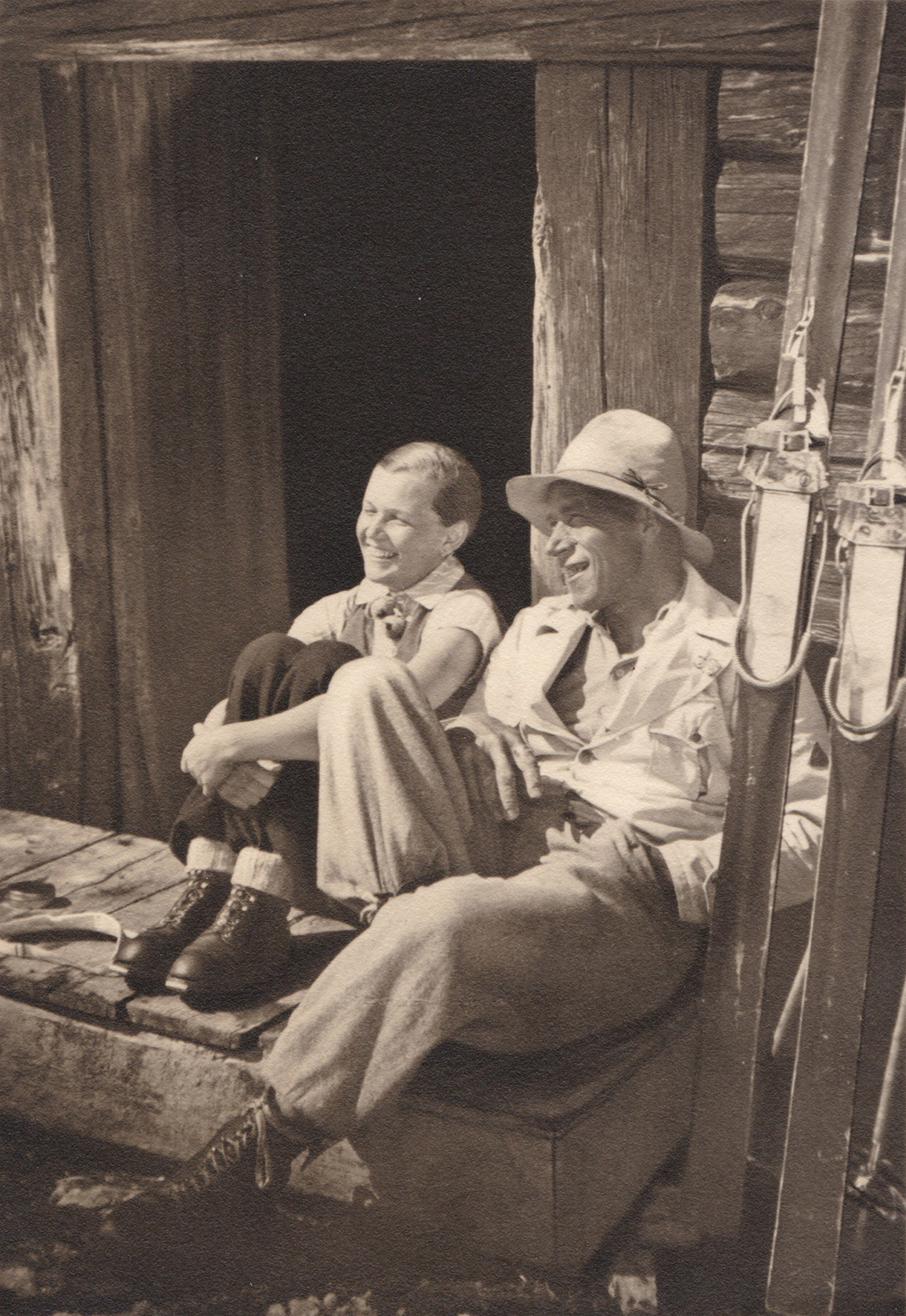
WOMEN IN TAILORING
Although Inge had been taught by Johann and was more than capable to take over the family business, she did so at a time when women were in the early stages of fighting for equality. The transition was sudden and traumatic. The potent mix of current political events, sexism and trying to bring up a young family proved too overwhelming for the business to continue and Inge relinquished her role as Tailor.
DESCENT INTO WAR
As the 1930s closed out, Europe was rushing headily into war. We can only imagine what thoughts preoccupied young men like Johann at the end of that decade. Does war act as replacement for the thrill of the mountain or does traversing a powdered peak allow respite from the inevitable call from the military? What’s certain is that Johann would soon find himself in the genesis of all tailored clothing, military uniform.
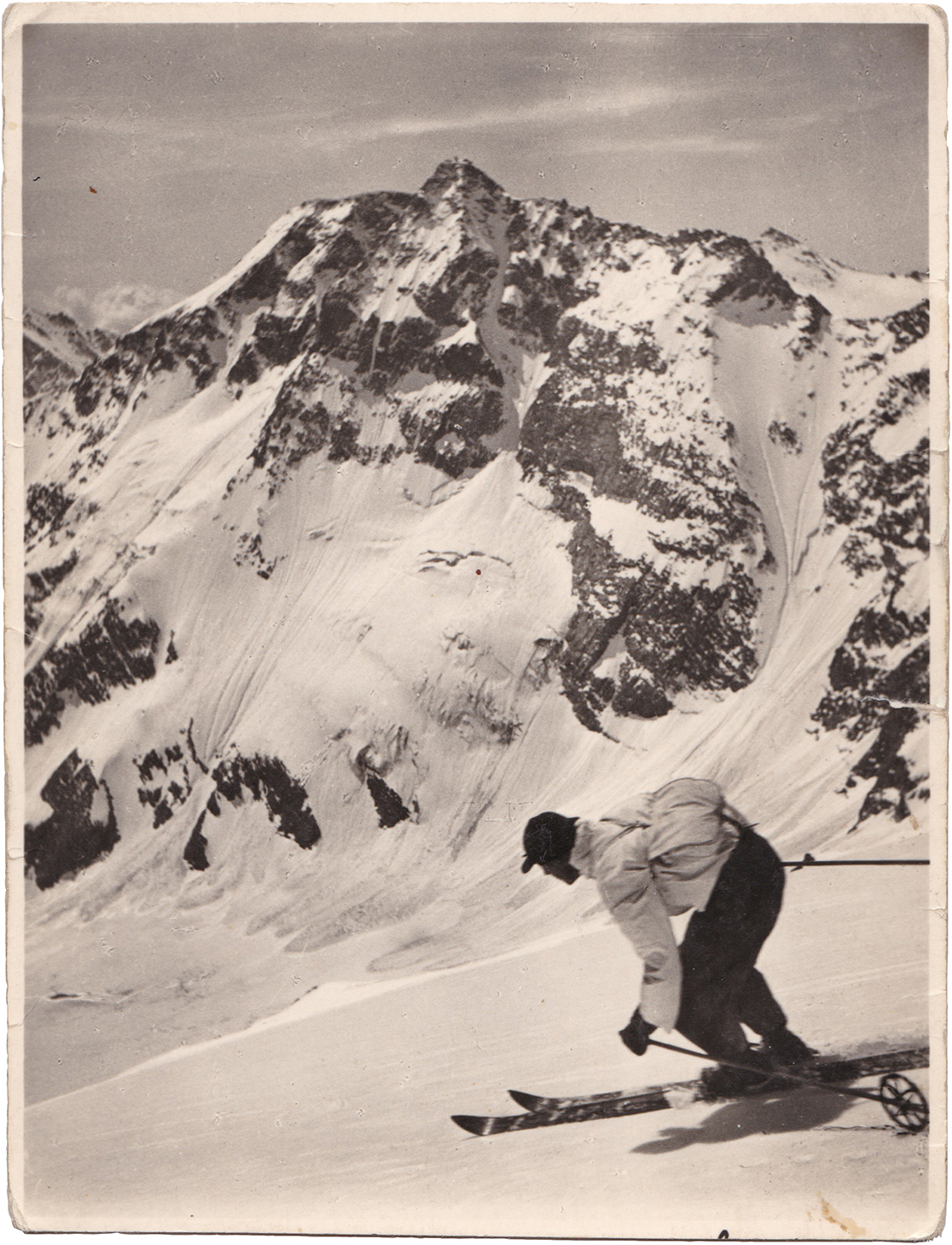
DESCENT INTO WAR
As the 1930s closed out, Europe was rushing headily into war. We can only imagine what thoughts preoccupied young men like Johann at the end of that decade. Does war act as replacement for the thrill of the mountain or does traversing a powdered peak allow respite from the inevitable call from the military? What’s certain is that Johann would soon find himself in the genesis of all tailored clothing, military uniform.

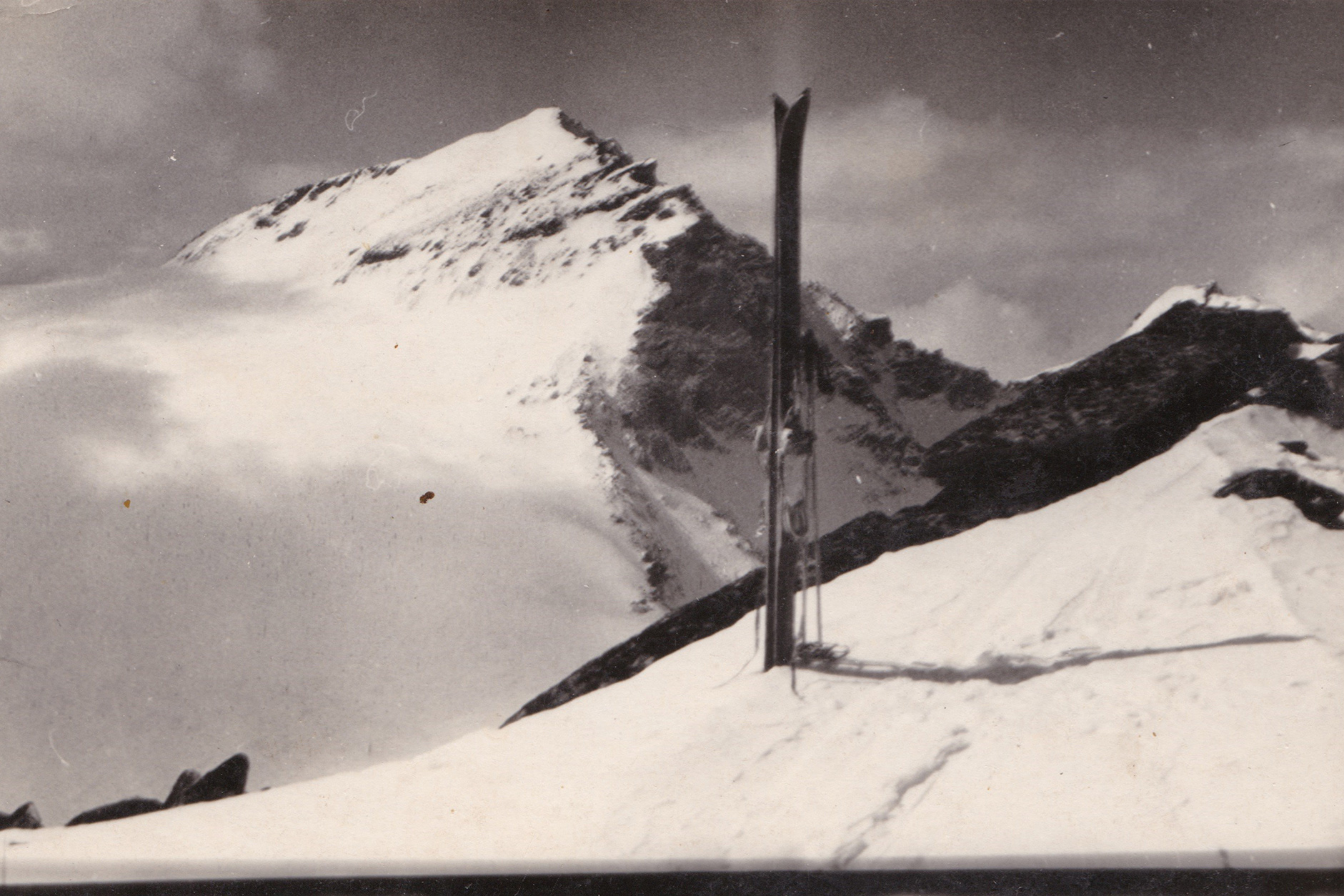
J S SPIRIT
Like millions of other men and women, Johann lost his life in the deadliest military conflict in history. When Inge came to revive the business, she stumbled into a workshop arrested in time. The atelier was flanked by redundant patterns and half-cut coats for dead men, none of which would ever be collected. The place had become a grave for the garments these men had commissioned, no idea that they would never see their creations come to life.
Jenny Schwarz is our attempt to reignite the spirit of Johann and in honour of Inge, to do it in a woman’s name.
J S SPIRIT
Like millions of other men and women, Johann lost his life in the deadliest military conflict in history. When Inge came to revive the business, she stumbled into a workshop arrested in time. The atelier was flanked by redundant patterns and half-cut coats for dead men, none of which would ever be collected. The place had become a grave for the garments these men had commissioned, no idea that they would never see their creations come to life.
Jenny Schwarz is our attempt to reignite the spirit of Johann and in honour of Inge, to do it in a woman’s name.
